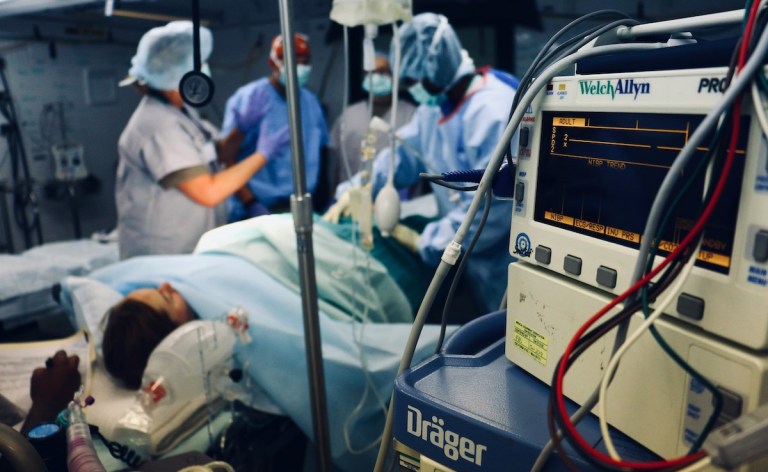How AI Is Helping Build Smart Hospitals That Deliver Better Patient Care

Artificial intelligence has found its way into consumer healthcare from several angles, including disease diagnosis, treatments for conditions like autism and pharmaceutical research.
Until now though, the technology has been a bit light on improving the patient experience. However, even that is about to change.
Some of the companies leading the way in this area include Chartis, which is using AI to clarify medical language for patients, and Amelia, which is using AI to help patients navigate their journeys through the scheduling, treatment and payment processes.
One of the companies in the news in this area these days — courtesy of a $42 million series B fundraise in mid-January — is Artisight. Billing itself on its website as a company that wants to see healthcare “through the lens of possibility,” Artisight is focused on removing friction from the patient-caregiver relationship with AI, creating what it calls a “smart hospital.”
“When I think of a smart hospital, I think about whether the infrastructure of the hospital itself is helping to advance the care of the patient,” Artisight President Stephanie Lahr told PYMNTS. “That can be seen in making things happen faster, making things happen more effectively, or just in providing higher quality data points in order to be able to make decisions. That happens with sensors. A smart hospital really is an IoT sensor network platform within a hospital that is capturing and assimilating large amounts of data.”
Lahr is a medical doctor herself and before joining Artisight, she spent six years as combined chief information officer and chief medical information officer at Monument Health in South Dakota. Board-certified in clinical informatics, she recognized the need for a better patient-caregiver relationship at several points during her career, especially at Monument.
Under her guidance, the Artisight platform is aimed at doing what is plainly stated on her LinkedIn profile: reducing friction in the healthcare experience. In the process, the company hopes to alleviate some of the stress on nurses and other caregivers who have been strained since the pandemic.
How It Works
The Artisight platform marries IoT sensors with machine learning and large language models. The overall goal in a hospital setting is to streamline safe patient care, including virtual nursing. Compliance with HIPAA, according to Lahr, has been an important part of the platform’s development, which includes computer vision, voice recognition, vital sign monitoring, indoor positioning capabilities and actionable analytics reports.
In more detail, a hospital patient room is equipped with Al-powered devices such as high-quality, two-way audio and video with multiple participants for virtual care. Ultra-wideband technology tracks the movement and flow of assets throughout the hospital. Remote nurses and observers monitor patient room activity off-site and interact virtually with patients and clinicians.
The data generated from the entire platform has reset traditional data entry methods, replaced by algorithms that intuitively analyze data through sensors and other real-time, patient-specific data.
Applications in the Real World
Last November, Artisight and Guthrie Clinic were recognized for the implementation of an AI-driven remote nursing solution and virtual command center to improve care delivery. The honor marked the first time a health system and technology partner received the award jointly.
Like other Artisight clients, Guthrie has seen a reduction in clinicians’ documentation and coordination, increased time for direct patient care, reduced administrative costs, and better patient outcomes and satisfaction.
For example, Northwestern Medicine in Chicago, which counts more than 4,000 practicing physicians and twice as many nurses, recently reported a 52% reduction in nursing overtime, an 89% reduction in patient accidents, a 76% reduction in nursing turnover, and record-high nursing and patient satisfaction scores, Lahr said.
“A lot of the conversations that we’re having center around how we reinvent and how do we transform the work that nurses do to allow them to be happier,” she said. “Some of that is by dividing the work differently, and some of it is through automation. Certainly, when we think about virtual care, then we start talking about virtual nursing, virtual pharmacy, virtual respiratory therapy and more. We absolutely want to be the platform that organizations depend on for their virtual nursing solution, but we want that to be the foundation to build automation from there using computer vision and natural language processing.”
Making the Platform Smarter
The more hospitals use Artisight, the smarter the platform gets.
Lahr said it’s not a “set and forget” environment; it depends on patient as well as caregiver and clinician interaction.
She said she’s also careful to point out that the platform enables virtual care — even virtual care from within the facility — but it’s not limited to that. Virtual care allows anybody in the clinical environment to use the platform and then access the data. AI is a two-way street with healthcare. If both patient and clinician are contributing their interactions, then friction in the relationship and experience can be removed. Without investments from both sides, Artisight can’t scale.
The $42 million funding will take care of a different kind of scale, and that’s Artisight’s growth.
“I want to help paint the vision for health systems,” Lahr said. “And in that vision, I believe that this is the next kind of infrastructure that is absolutely required for health systems to advance. It is about understanding that cameras and speakers in every hospital room in the country is probably where we need to go. And we need to be thinking about how to make that happen, both technically as well as operationally. So, if we’re projecting out a year from now, I want to be at a point where all health systems have this on their roadmap. This ability to observe and understand in the rooms is where the future of the patient and caregiver experience is going.”
For all PYMNTS AI coverage, subscribe to the daily AI Newsletter.